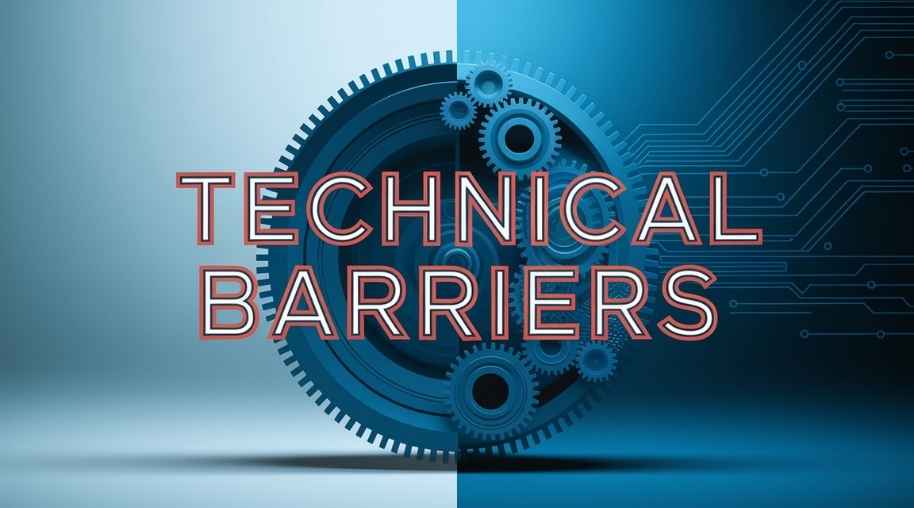TBT Full Form-Technical Barriers to Trade
by Shashi Gaherwar
0 2252
Technical Barriers to Trade (TBT): Challenges, Impact, and Global Regulations
International trade plays a crucial role in global economic growth. However, governments often impose Technical Barriers to Trade (TBT) to regulate the quality, safety, and environmental impact of imported and exported goods. While these measures are essential for consumer protection and national security, they can sometimes act as non-tariff trade barriers, creating challenges for global commerce.

In this article, we will explore the concept of TBT, its significance, challenges, and how international organizations, such as the World Trade Organization (WTO), regulate these barriers to ensure fair trade.
What Are Technical Barriers to Trade (TBT)?
Technical Barriers to Trade (TBT) refer to regulations, standards, and testing procedures imposed by governments that may restrict trade. These include:
- Product Quality Standards: Such as food safety requirements.
- Certification and Labeling Requirements: Ensuring proper product information.
- Technical Specifications: Including environmental sustainability criteria.
- Health and Safety Regulations: Protecting public health and safety.
While TBTs are intended to ensure safety and quality, they can also become protectionist tools, making it difficult for foreign businesses to enter certain markets.
Examples of TBT in Global Trade
TBTs manifest in various forms across industries:
- Food and Agricultural Standards: Strict pesticide residue limits on imported fruits and vegetables or EU regulations on genetically modified organisms (GMOs).
- Automobile Safety Regulations: Different safety and emission standards in the U.S., EU, and China, requiring market-specific vehicle models.
- Electronics and Communication Equipment Standards: China’s cybersecurity laws imposing restrictions on foreign technology companies.
- Environmental Protection Measures: Mandates for carbon footprint certifications affecting carbon-intensive industries.
Impact of TBT on International Trade
TBTs have significant implications for global trade:
- Increased Compliance Costs: Businesses must modify products to meet country-specific regulations, raising production and certification costs.
- Market Entry Barriers: Stringent TBT measures can discourage small and medium-sized enterprises (SMEs) due to compliance complexity.
- Protectionism Concerns: Some governments use TBTs as disguised measures to shield domestic industries from foreign competition.
- Trade Disputes: Countries often engage in disputes over unfair TBTs, such as U.S.-EU debates on food safety standards for poultry and dairy.
The Role of the WTO in Regulating TBT
The World Trade Organization (WTO) ensures TBT measures do not unfairly restrict trade through the WTO Agreement on Technical Barriers to Trade. Key principles include:
- Non-Discrimination: Member countries should not favor domestic industries over foreign competitors.
- Avoidance of Unnecessary Trade Barriers: Regulations must serve legitimate objectives like public health without restricting trade.
- Harmonization with International Standards: Countries are encouraged to align with global standards like ISO and Codex Alimentarius.
Strategies for Businesses to Overcome TBT Challenges
Businesses can adopt strategies to navigate TBTs effectively:
- Early Compliance Planning: Research market-specific regulations and engage with local regulatory bodies for streamlined approvals.
- Certification and Quality Assurance: Obtain globally recognized certifications like ISO or CE marking to ease market entry.
- Trade Agreements and Negotiations: Leverage bilateral and multilateral trade agreements to harmonize technical standards.
- Collaboration with Industry Associations: Partner with trade bodies for insights and advocacy support in addressing regulatory challenges.
Future Trends in Technical Barriers to Trade
Emerging trends in TBTs include:
- Rise of Digital and Cybersecurity Regulations: Increasing cybersecurity and data protection laws as e-commerce and digital trade grow.
- Environmental and Sustainability Standards: Stricter carbon footprint regulations and eco-labeling for imports.
- Global Standardization Efforts: WTO, ISO, and regional trade blocs working towards greater alignment of technical standards to reduce TBTs.
Technical Barriers to Trade (TBTs) serve essential purposes like consumer protection and environmental sustainability, but they can hinder global trade if misused. Balancing regulatory objectives with free trade principles is key to ensuring a fair and open international market. By understanding and navigating these barriers through compliance, certifications, and strategic market entry planning, businesses can expand their global reach while adhering to necessary trade regulations.
Further Learning Resources
If you’re passionate about building a successful blogging website, check out this helpful guide at Coding Tag – How to Start a Successful Blog. It offers practical steps and expert tips to kickstart your blogging journey!
For dedicated UPSC exam preparation, we highly recommend visiting www.iasmania.com. It offers well-structured resources, current affairs, and subject-wise notes tailored specifically for aspirants. Start your journey today!

Share:








Comments
Waiting for your comments